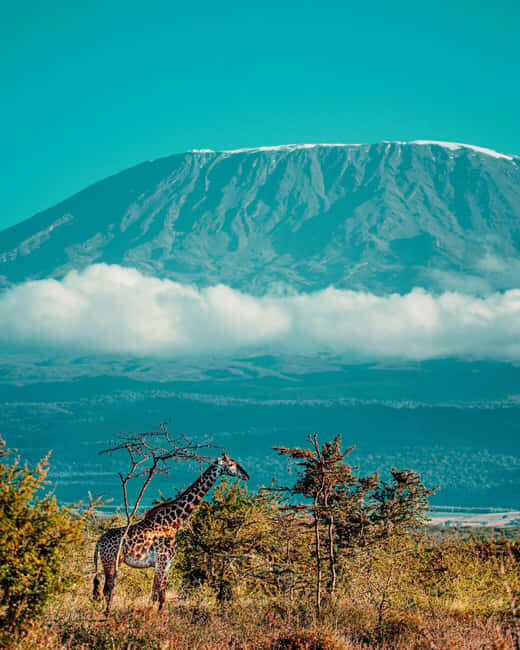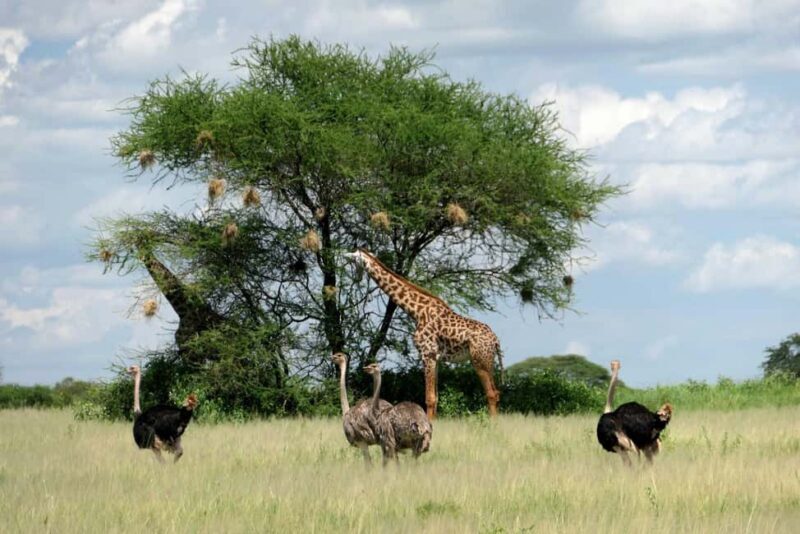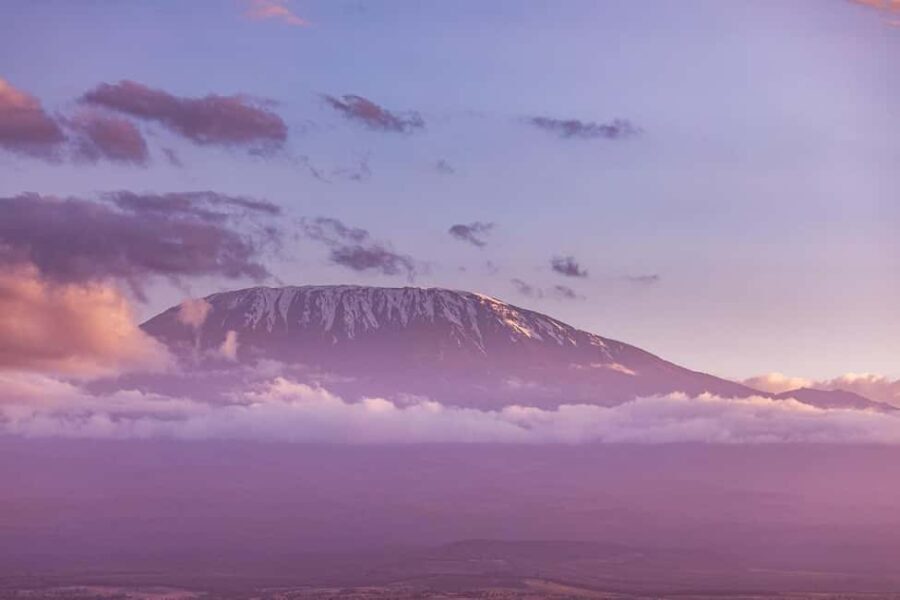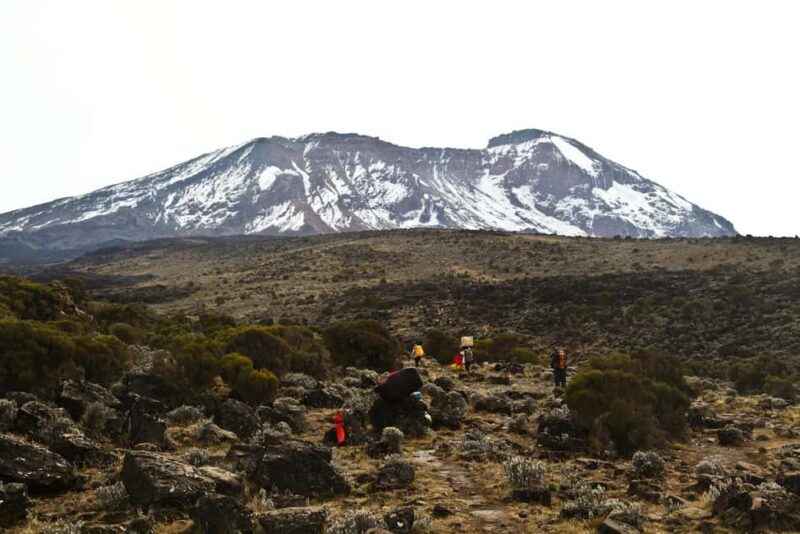If you’re considering a trek up the tallest mountain in Africa, the 5-Day Adventure Kilimanjaro via the Marangu Route offers an attractive mix of convenience, scenic beauty, and a manageable climb. While it’s often called the “tourist route” or “Coca-Cola route,” don’t let the nickname fool you — this journey provides genuine mountain experiences and serves as a solid choice for those new to high-altitude trekking or looking for a shorter, doable ascent.
What makes this tour appealing? For starters, the cost of $1,000 per person includes almost everything you need, from porters to meals. Second, the route is the easiest and shortest to the summit, making it accessible without sacrificing the thrill of standing on Africa’s rooftop. Lastly, the days are well-paced, with plenty of opportunities to enjoy breathtaking views of Mawenzi and Kibo peaks and the chance to absorb Kilimanjaro’s diverse landscapes from rainforest to alpine desert.
However, one consideration worth noting is that the Marangu Route is quite popular and busy, especially at the huts. This can mean a more crowded experience on the mountain and limited privacy in the shared huts. Still, for those wanting a straightforward and less technical climb, this setup offers comfort and camaraderie.
This trek suits beginners, those with limited time, or travelers who prefer a guided experience that covers the essentials without unnecessary complications. It balances adventure with practicality, making it a worthwhile option for many.
Key Points

- Accessible for beginners: The route’s short duration and gradual ascent make it suitable for first-timers.
- Includes most costs: The $1,000 price covers porters, accommodation, meals, and transfers, offering good value.
- Scenic diversity: Expect lush rainforest, moorland, and barren alpine landscapes along the way.
- Well-supported experience: Guides, cooks, and porters are part of a seamless team ensuring your comfort.
- Midnight summit attempt: The early start to reach Uhuru Peak tests your endurance but rewards with stunning sunrise views.
- Crowded huts: Expect to share small, cozy accommodations with fellow trekkers during your ascent.
An In-Depth Look at the 5-Day Kilimanjaro Trek via Marangu Route

Love being outdoors? Check out these other hiking spots we've covered in Marangu
Day 1: From Arusha to Mandara Hut — Entering the Forest
Your adventure kicks off with a roughly four-hour drive from Arusha to Marangu Gate. The scenic journey offers a glimpse of Tanzania’s vibrant landscape and rural charm. Upon arrival, you’ll meet your team — guides, cooks, and porters — all vital for a smooth climb. Registration at the gate is straightforward, and then your trek begins.
The initial walk is through a dense rainforest, so comfortable hiking shoes are essential. The trail is narrow but well-trodden, leading gradually upward, and provides a peaceful start with lush greenery all around. You’ll stop for a picnic lunch at Kisambioni, about halfway through the day’s walk, which helps break up the ascent. After lunch, the trail continues through the rainforest until you reach Mandara Hut, a cozy shelter that sets the tone for your mountain experience.
Many reviews highlight the serenity of this part of Kilimanjaro, with some noting the rich birdlife and the cool, fresh air. As you settle into Mandara Hut, you’ll notice how the small A-frame buildings are efficient yet humble, accommodating multiple climbers in shared rooms.
Day 2: Mandara to Horombo — Transitioning to Moorland and Rocky Terrains
Starting early, you’ll leave Mandara Hut after breakfast and head toward Horombo Hut. The landscape shifts from lush rainforest to the moorland zone, characterized by rocky, desert-like terrain, and hardy plants. The trail is mostly open, offering panoramic views and a sense of how the mountain’s environment changes with altitude.
A highlight is the picnic spot at Kambi ya Taabu, where you might pause to enjoy the expansive views. Here, the landscape becomes more rugged, with fewer trees and more volcanic rocks. Weather conditions can vary — some days are clear and bright, revealing Kilimanjaro’s twin peaks, Mawenzi and Kibo, while others might bring clouds or mist, adding an element of unpredictability.
The iconic Horombo Hut, with its distinctive A-frame structures, is often praised for its communal atmosphere. Many trekkers comment on how lively the huts are, packed with fellow climbers swapping stories and preparing for the final ascent. The altitude here, around 3,700 meters, begins to make itself felt, so proper acclimatization is key.
Day 3: Horombo to Kibo — Approaching the Summit Area
This day takes you through the saddle, a flat expanse with stunning views of the peaks. The walk from Horombo to Kibo is longer, but the terrain is less challenging, with gradual inclines and some flatter stretches. You’ll cross the Maua River, a small mountain stream that marks a significant point in your ascent.
Lunch is at Middle Red Hill, with views of Kilimanjaro’s more barren upper slopes. The environment becomes increasingly alpine — the vegetation thins out, and the air feels crisper. As you ascend, you’ll notice the landscape turning into a rocky, almost lunar terrain with minimal plant life. This stark environment heightens the anticipation for the summit push.
Reaching Kibo Hut around 3 pm, many reviewers mention feeling both excited and tired. This part of the trek is where preparation for the midnight climb begins, with climbers resting early to conserve energy for the challenge ahead.
More Great Tours NearbyDay 4: The Summit Push — Midnight to Uhuru Peak
The most intense part of the journey starts just after midnight. Using headlamps, you traverse steep scree slopes, snow, and ice — a true test of endurance and mental grit. The climb to Gilman’s Point on the crater rim is arduous but incredibly rewarding, with icy terrain and breathtaking views in every direction.
Continuing to Uhuru Peak, Africa’s highest point at 5,895 meters, many describe the experience as surreal. The cold can be biting, especially in the early hours, so layering is essential. The sense of achievement is immense as you stand on the continent’s rooftop, with the sun rising behind you illuminating the glaciers and craters.
Many reviews mention the importance of a slow, steady “pole pole” approach — rushing won’t get you there. The climb is demanding but manageable with proper pacing and mental resilience.
- 2-Day Trip to Mikumi from Zanzibar Latest Itinerary
- 4-Days Kilimanjaro Climb: Marangu Private Tour
- 2-Day Short Mount Kilimanjaro Trek
- Best Short Trek: 2-Day Kilimanjaro Marangu Route Experience
- Marangu: Traditional Village Tour with Chagga Experience
- Explore Our Top Best 7-Day Lemosho Climbing Kilimanjaro
Day 5: Descending to the Trailhead — Returning to Arusha
After sunrise and some photos at the summit, you’ll begin your descent back to Horombo Hut. The downhill walk is faster but just as important for acclimatization, helping your body adjust back to lower elevations. Expect a lush, green forest landscape as you approach the park gate, where your journey started.
The drive back to Arusha provides a well-deserved break after the climb, with many reflecting on their incredible achievement. Some reviews mention the wet, muddy conditions at the lower elevations, so waterproof footwear is recommended.
What’s Included and What’s Not

The tour’s price of $1,000 per person covers much of what you need to make this climb comfortable and safe. Included are porterage, rescue fees, all accommodations, meals, transportation, and taxes. The professionalism of the guides and the support team ensures a smooth experience, with many reviews praising their expertise and friendly attitude.
However, some extras aren’t included — notably, climbing gear, international flights, additional pre- or post-tour accommodation, and personal items. Tipping is modestly suggested at around $10 per day, which many think is reasonable considering the level of service. Park fees, souvenirs, and travel insurance are also additional considerations, so budget accordingly.
Practical Tips for Participants
Bring comfortable, broken-in shoes suitable for trekking, along with warm layers for the summit attempt. Since the descent can be muddy, waterproof gear is helpful. The tour recommends carrying essentials like cash, a camera, hiking pants, binoculars, and trekking gear — all straightforward items that enhance your experience.
The meeting point is conveniently at the airport, and the tour concludes back there — perfect for those with onward flights. Flexibility is available with a “reserve & pay later” option, and cancellation is free if made 24 hours in advance.
Who Should Consider This Tour?

This trek appeals most to beginners or those with limited time who want an achievable yet memorable climb. It’s also ideal for travelers seeking an affordable, guided package that covers almost everything from start to finish. If you’re interested in seeing the diverse landscapes of Kilimanjaro without technical difficulty, this route is a sensible choice.
However, if privacy and solitude are priorities, or you prefer a less crowded atmosphere, the Marangu route’s popularity might be a drawback. Still, for friendly camaraderie and a well-supported experience, it hits the right notes.
Final Thoughts
The 5-Day Adventure Kilimanjaro via Marangu Route is a practical, rewarding way to reach Africa’s highest point without the complexity of more technical routes. Its inclusive price, scenic diversity, and supportive team make it a top choice for many. You’ll enjoy stunning views, lush forests, and a sense of achievement, all within a manageable timeframe.
While it can be busy, the well-organized logistics, helpful guides, and comfortable huts make this a trip that balances comfort and adventure nicely. Whether you’re new to high-altitude trekking or seeking an efficient way to tick Kilimanjaro off your bucket list, this tour offers excellent value and authentic mountain memories.
FAQs
What is included in the tour price?
The $1,000 fee covers porterage, rescue fees, all activities, accommodations, transportation, taxes, and meals as specified in the itinerary. Drinks are included as indicated, but climbing gear, personal items, and park fees are not.
Are accommodations at the huts shared?
Yes, the small A-frame huts are communal, often accommodating up to eight people each. Many reviewers mention the lively atmosphere and camaraderie in these shared spaces.
How fit do I need to be?
While no technical skills are required, good general fitness and the ability to walk for several hours daily are important. The initial days are more moderate, but the summit push involves steep, challenging terrain.
Is the route suitable for children or elderly?
Generally, the Marangu Route is considered accessible for most adults in good health, but it may be challenging for very elderly travelers or those with health issues. Always consult your doctor before attempting high-altitude climbs.
What should I bring?
Comfortable shoes, warm layers, a rain jacket, a hat, sunglasses, cash, a camera, and trekking gear. Waterproof footwear is recommended for the descent due to muddy conditions.
Can I customize the trip or extend my stay?
Additional accommodation before or after the climb can be arranged, but it’s not included in the base price. Tipping is customary and additional. It’s advisable to discuss options with the tour provider in advance.
In summary, this Kilimanjaro trek via the Marangu route offers a balanced package of scenic beauty, support, and value. It’s well-suited for those seeking a manageable climb with authentic mountain experiences, making it an excellent choice for first-timers or travelers with limited time.
You can check availability for your dates here:More 5-Day Experiences in Marangu
More Hiking & Trekking Tours in Marangu
More Tour Reviews in Marangu
- 7-day climb of Kilimanjaro – Rongai route
- 5-Day Adventure Kilimanjaro Trekking via Marangu Route
- Explore The Best 6-Day Marangu Route Kilimanjaro Climbing
- #1-Day Hike Marangu Kilimanjaro Joining Group Tour
- Arusha: 6-Day Mount Kilimanjaro Climb via Marangu Route
- Explore Our Top Best 7-Day Lemosho Climbing Kilimanjaro
